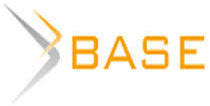Psychological characteristic of the structure of musical thinking
Musical and artistic development in the system of training of musicians is of priority importance and is the most important task of musical pedagogy. The search for innovative methods of artistic education of musicians is complicated by the empirical approach to solving this problem. For scientific understanding of this phenomenon it is necessary, first of all, to determine the scientific apparatus that provides unambiguity in understanding the essence of the studied. The core of musical and artistic development is musical thinking. It determines its qualitative characteristics. However, numerous definitions of musical thinking are characterized by a variety of characteristics that neither reflect the essence of the phenomenon, nor have the necessary unambiguity. Often, they miss the main thing that distinguishes musical thinking – its sound-like basis. At the same time, musical thinking is a system of mental mechanisms operating with musical and auditory representations for the implementation of musical activity. This definition must be supplemented by a description of the structure of musical thinking. It consists of specially organized, musical and auditory representations, forming musical and auditory images. The latter are largely determined by emotional and intellectual factors. They provide the figurative sphere with an individual shade, reflecting the specific properties of each person's thinking. It should be noted that emotional and intellectual factors do not constitute separate types of thinking, but activate specific properties of the figurative sphere. This does not mean that musicians do not use or possess abstract logical thinking. It, undoubtedly, functionally helps to solve the problems facing the person. But when it comes to musical thinking, its main link is the musical-auditory image.

















While nobody left any comments to this publication.
You can be first.
Asafiev, B.V. (1971), Muzykal'naya forma kak protsess [Musical form as a process], Music, Moscow, Russia.
Berlyanchik, M.M. (2000), Osnovy vospitaniya nachinayushchego skripacha: Myshleniye. Tekhnologiya. Tvorchestvo [Fundamentals of education of a beginner violinist: Thinking. Technology. Creativity], Lan', St. Petersburg, Russia.
Vygotskij, L.S. (1956), Izbrannyye psikhologicheskiye issledovaniya [Selected psychological studies], Moscow, Russia.
Elistratova, G.B. (2002), Musical thinking as a form of creative activity. Abstract of PhD dissertation, Ogarev Mordovia State University, Saransk.
Izard, K.E. (2009), Psikhologiya emotsiy [Psychology of emotions], St. Petersburg, Russia.
Il'in, E.P. (2011), Psikhologiya emotsiy [Emotions and feelings], Piter, St. Petersburg, Russia.
Kagan, M.S. (1970), “Experience of system research of human activity”. Filosofskie nauki, 5.
Kadyrov, R. (2005), Muzykal'naya psikhologiya [Musical psychology: a textbook]. Musika, Toshkent, Uzbekistan
Kirnarskaya, N.I. Kiyashchenko, K.V. Tarasova et al.: ed. by G.M. Cypina (2003), Psikhologiya muzykal'noy deyatel'nosti: Teoriya i praktika [Psychology of musical activity: Theory and practice: a manual for students of musical faculties] Moscow, Russia.
Likhachev, D.S. (1999), Ocherki po filosofii khudozhestvennogo tvorchestva. [Essays on the philosophy of art]. St. Petersburg, Russia.
Maklakov, A.G. (2010), Obshchaya psikhologiya [General psychology], Piter, St. Petersburg, Russia.
Mil'shtein YA. (1971), List [Liszt], Musika, Moscow, Russia.
Rubinshtein, S.L. (1973), Problemy obshchey psikhologii [Problems of general psychology], Moscow, Russia.
Sokhor, A.N. (1974), Sotsial'naya obuslovlennost' muzykal'nogo myshleniya i vospriyatiya [Social conditionality of musical thinking and perception], Moscow, Russia.
Teplov, B.M. (1947), Psikhologiya muzykal'nykh sposobnostey [Psychology of musical abilities], Akademiya pedagogicheskih nauk, Moscow, Leningrad, Russia.
Tkacheva, E.E. (2008), “Musical thinking as a method of formation of the pupils’ personality”, Izvestiya RGPU im. A.I. Gercena. 51, Moscow, Russia. URL: http://cyberleninka.ru/article/n/muzykalnoe-myshlenie-sposob-formirovaniya-lichnosti-uchaschihsya (Accessed 23 March 2019).
Ushakova, L.G. (2012), “Musical thinking: formation of ideas, views, theories”, Psikhologiya. Istoriko-kriticheskiye obzory i sovremennyye issledovaniya. Http://publishing-vak.ru/file/archive-psycology-2012-5/2-ushakova.pdf (Accessed 23 March 2019). (In Russian).
Tsagarelli, Yu.A. (2008), Psikhologiya muzykal'no-ispolnitel'skoy deyatel'nosti [Psychology of music performance activities], Textbook. Sankt-Peterburg, Russia.
Shmal'ko, Yu.V. (2008), “About methods of development of musical thinking of the pupil in the musical school”, Proceedings of the international conference Muzykal'noe obrazovanie i vospitanie v Rossii, stranah SNG i Evropy v XXI veke. Sostoyanie i perspektivy. Sankt-Peterburg, Russia. (In Russian).
Milicevic Nebojsa, Pejic Biljana, Komlenic Miroslav, Cvetanovic I. (2016), The attitudes of students of psychology in grading knowledge and creativity, Research Result. Pedagogy and Psychology of Education, 2 (3), 49-55.
Sim, K.S. and Duffy, A.H. (2002), Knowledge transformers — a link between learning and creativity. AID-02 Workshop on Learning and Creativity. 1-10.
Sradzhev, V.P. (2019), Thinking as a systemic organization of mental mechanisms. Scientific research of the SCO countries: synergy and integration October, 14. Part 2. http://naukarus.ru/public_html/wp-content/uploads/2019/ Scientific%20research%20of%20the%20SCO%20countries%20-%20English%20Reports%20-%20October%2014%20-%20Part%202.pdf#page=71 DOI 10.34660/INF.2019.18.38825
Storfer, M.D. (1990), Intelligence and giftedness. The contributions of heredity and early nn biinmiut Francisco. Oxford. Jossy-Bass Publ.
Torrance, E.P. (1988), The nature of creativity as manifest in its testing//R. J. Sternberg, T.Tardif (eds.) The nature of creativity: Contemporary psychological perspectives. Cambridge. Cambridge University Press, 43-75.